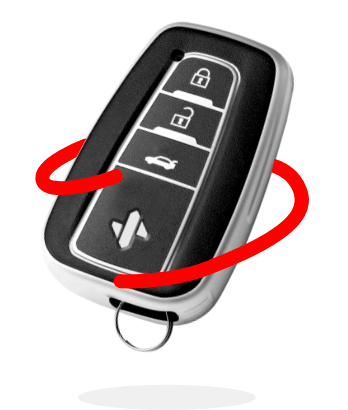Car insurance is one of those things that we all need but hope we never have to use it. It can be a lifesaver in the event of an accident, but it can also be confusing when it comes to understanding what exactly is covered. Is it the car? Is it the driver? Or could it be both? This post aims to clarify these questions.
UNDERSTANDING CAR INSURANCE
Auto insurance is a contract between a car owner and an insurance company, where the insurer agrees to pay for specific car-related financial losses or damages in exchange for regular premiums paid by the car owner.
There are several types of car insurance, including liability coverage, collision coverage, comprehensive coverage, and uninsured/underinsured motorist coverage. Each type covers different aspects – ranging from damages to your car and medical expenses to coverage if you're hit by a driver who doesn't have insurance.
IS CAR INSURANCE TIED TO THE CAR OR THE DRIVER?
The answer to this question depends on several factors, including the type of insurance coverage involved. Generally, car insurance is tied to both the car and the driver. However, the extent to which each is covered depends on the specifics of the policy and the situation.
When Does Car Insurance Cover the Car?
Car insurance primarily covers the car in cases of physical damage or theft. Collision coverage pays for damage to your car resulting from a collision with another vehicle or object, regardless of who's at fault. Comprehensive coverage, on the other hand, pays for damage to your car caused by events like fire, theft, vandalism, or natural disasters.
When Does Car Insurance Cover the Driver?
Car insurance can follow the driver in certain situations. One common scenario is when you’re driving a rental car. In this case, your personal auto insurance policy may extend to the rented vehicle, offering similar coverage as it would for your own car. However, this largely depends on your insurance policy, the type of rental car, and the rental agency's policies. Checking with your insurance provider before renting a vehicle is always advisable.
Another scenario where your car insurance might follow you is when you drive someone else's car with their permission. If an accident occurs, your car insurance could act as secondary coverage if the car owner's insurance limit is exhausted. This means your insurance would kick in to cover the remaining costs after the car owner's insurance has been fully utilized. However, the specifics can vary based on the insurance policy terms and local regulations. Always verify these details with your insurance company before driving another person's vehicle.
COMMON MISCONCEPTIONS ABOUT CAR INSURANCE COVERAGE
There are numerous misconceptions surrounding car insurance that can lead to confusion for policyholders. One such misconception is the belief that car insurance automatically covers any driver of the vehicle. This isn’t always the case.
In general, car insurance is primarily tied to the car and not the driver. Hence, if a friend borrows your car and gets into an accident, it’s typically your insurance policy that would cover the damages.
However, it's crucial to note that this can vary based on specific policies and circumstances. Some insurance policies may have exclusions for drivers not listed on the policy, which could impact the coverage in the event of an accident. Furthermore, if the borrowing driver has their car insurance, their policy might also come into play depending on the situation.
Do You Need Insurance to Drive Someone Else's Car
Driving someone else's car can present unique insurance considerations – as car insurance follows the vehicle and not the driver. This means if you have permission to drive someone else's car, their insurance policy would likely cover damages in case of an accident.
However, the specifics can vary based on the insurance policy terms and local regulations. Some policies may exclude drivers not listed on the policy or offer limited coverage for non-named drivers. It’s also important to consider that if you frequently drive someone else's car, the car owner may need to add you as a named driver on their insurance policy for full coverage.
Furthermore, your car insurance might serve as secondary coverage if the car owner's insurance limit is exhausted. To avoid potential complications, verifying these details with the relevant insurance companies is always recommended before driving another person's vehicle.
How to Add A Driver to Your Auto Insurance Policy
Adding a driver to your auto insurance policy is a relatively straightforward process that can be completed online or over the phone. Generally, you can add any individual with a valid driver's license who regularly operates your vehicle and resides at your address. However, it's crucial to consider when to add a driver to your policy. Typically, it's required to add drivers who live in your household and/or regularly operate your vehicle. Always verify the added driver’s details and understand how the addition might impact your premium.
Navigating the world of car insurance can be complex, but understanding whether your policy covers the car, the driver, or both is crucial. It's always a good idea to review your auto insurance policy carefully and consult with your insurance provider to ensure you have the coverage you need.
If you need help finding the best car insurance coverage for the best price, speak to a SimplyIOA agent at 833.872.4467 or get an auto insurance quote online now.










